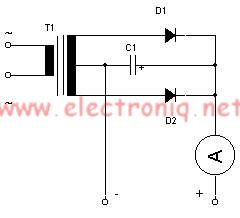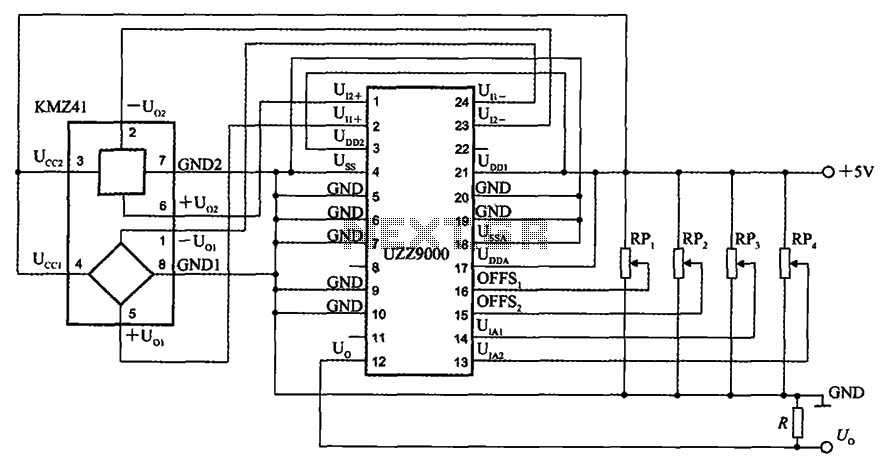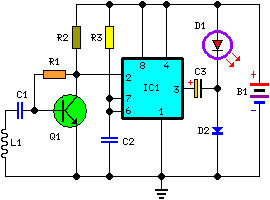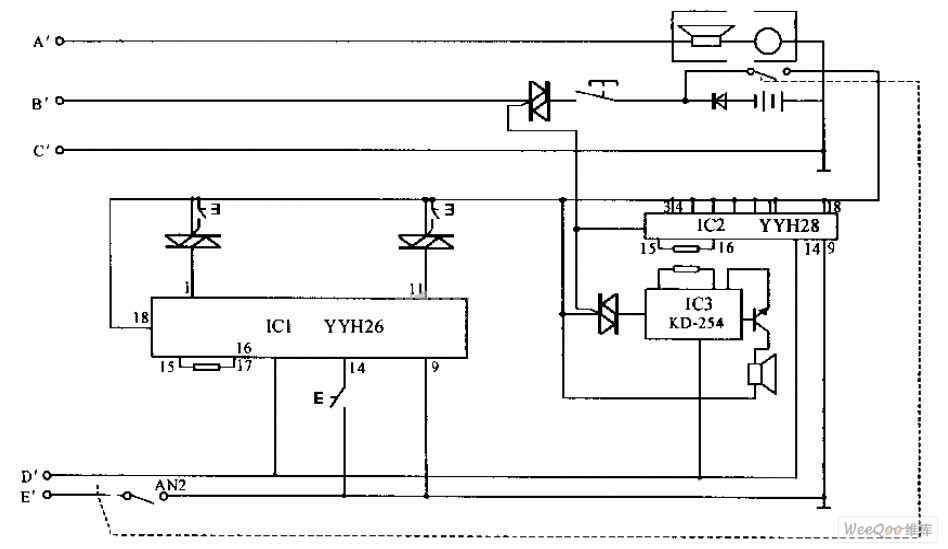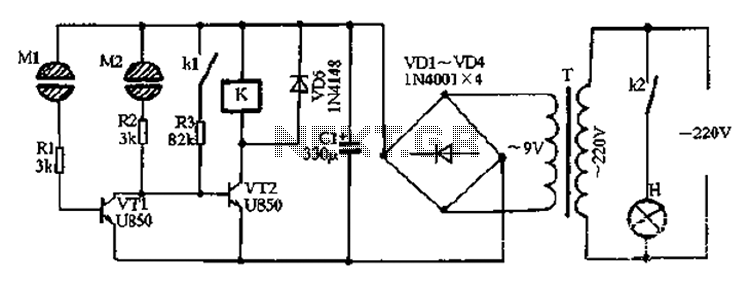
simple one wire touch detector

This simple circuit can be utilized to activate various devices, such as connecting it to microcontrollers, relays, secret alarms, or robot applications. It can also be used to turn on LED1, which remains lit as long as the metal plate is touched. The circuit comprises a voltage divider formed by resistors R1 and R2, a Schmitt trigger/inverter gate from a 40106 integrated circuit, a small capacitor to mitigate strong RF interference, and LED1 with a current-limiting resistor R3. The metal plate is connected via a wire to resistor R1, with R1 and R2 functioning together as a voltage divider.
The circuit operates based on the principle of a capacitive touch sensor. When a user touches the metal plate, it alters the capacitance at the input of the Schmitt trigger, which is configured to provide a clean digital output. The voltage divider, composed of resistors R1 and R2, sets a reference voltage that defines the threshold for the Schmitt trigger's switching behavior.
Resistor R1 is connected to the metal plate, while R2 is grounded, forming a voltage divider that provides a varying voltage to the Schmitt trigger input depending on the capacitance introduced by the user's touch. The Schmitt trigger's hysteresis characteristics ensure that the output toggles cleanly between high and low states, minimizing false triggering due to noise or rapid changes in input.
The capacitor serves to filter out high-frequency noise, ensuring stable operation in environments with potential RF interference. LED1 provides a visual indication of the circuit's activation status, while the current-limiting resistor R3 protects the LED from excessive current, ensuring longevity and reliability.
Overall, this circuit exemplifies a straightforward yet effective design for touch-sensitive applications, suitable for various electronic projects requiring user interaction.This simple circuit can be used to activate whatever you like, for example, by connecting it to microcontroller, relays, secret alarms, robot applications or just turn on LED1 which lights up as long as you touch the metal plate. The circuit consists of voltage divider R1 and R2, one Schmitt trigger/inverter gate from a 40106 IC, a small capacitor to keep strong RF at bay and LED1 with current limiting resistor R3.
The metal plate is connected via a wire to R1. R1 and R2 together form a voltage divider.. 🔗 External reference
The circuit operates based on the principle of a capacitive touch sensor. When a user touches the metal plate, it alters the capacitance at the input of the Schmitt trigger, which is configured to provide a clean digital output. The voltage divider, composed of resistors R1 and R2, sets a reference voltage that defines the threshold for the Schmitt trigger's switching behavior.
Resistor R1 is connected to the metal plate, while R2 is grounded, forming a voltage divider that provides a varying voltage to the Schmitt trigger input depending on the capacitance introduced by the user's touch. The Schmitt trigger's hysteresis characteristics ensure that the output toggles cleanly between high and low states, minimizing false triggering due to noise or rapid changes in input.
The capacitor serves to filter out high-frequency noise, ensuring stable operation in environments with potential RF interference. LED1 provides a visual indication of the circuit's activation status, while the current-limiting resistor R3 protects the LED from excessive current, ensuring longevity and reliability.
Overall, this circuit exemplifies a straightforward yet effective design for touch-sensitive applications, suitable for various electronic projects requiring user interaction.This simple circuit can be used to activate whatever you like, for example, by connecting it to microcontroller, relays, secret alarms, robot applications or just turn on LED1 which lights up as long as you touch the metal plate. The circuit consists of voltage divider R1 and R2, one Schmitt trigger/inverter gate from a 40106 IC, a small capacitor to keep strong RF at bay and LED1 with current limiting resistor R3.
The metal plate is connected via a wire to R1. R1 and R2 together form a voltage divider.. 🔗 External reference
